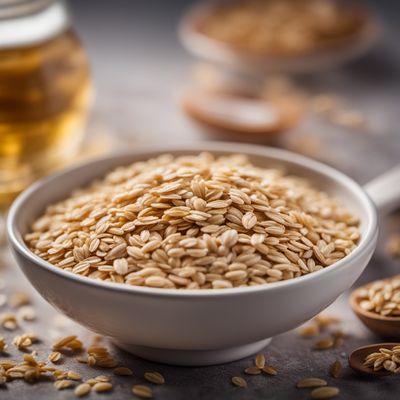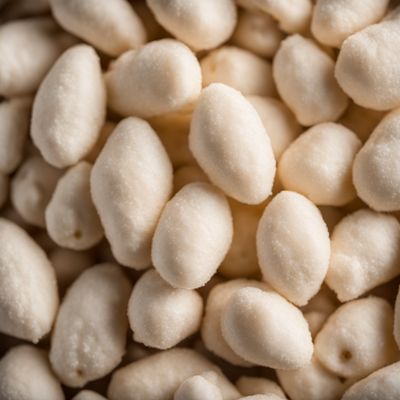
Ingredient
Rice starch
The Versatile Powerhouse: Rice Starch
Rice starch, derived from rice grains, is a fine white powder with excellent thickening properties. It has a neutral taste and a smooth, silky texture when cooked. Due to its ability to absorb and retain moisture, it is often used to improve the texture of sauces, soups, and desserts. Additionally, rice starch is gluten-free, making it a suitable alternative for individuals with gluten sensitivities or celiac disease.
Origins and history
Rice, one of the oldest cultivated grains, has been a staple food in many cultures for thousands of years. The use of rice starch can be traced back to ancient China, where it was used in traditional medicine and culinary practices. Over time, its popularity spread to other parts of Asia and eventually to the rest of the world. Today, rice starch is widely used in various cuisines and food industries globally.
Nutritional information
Rice starch is low in calories and fat, making it a suitable choice for those watching their weight or following a low-fat diet. It is also a good source of carbohydrates, providing energy to the body. Additionally, rice starch is gluten-free and does not contain any significant amounts of protein, fiber, vitamins, or minerals.
How to select
When selecting rice starch, opt for a reputable brand to ensure quality and purity. Look for a product that is finely ground and free from lumps or clumps. Check the packaging for any signs of moisture or damage. Additionally, consider purchasing organic rice starch if you prefer a product that is free from pesticides or genetically modified organisms (GMOs).
Storage recommendations
To maintain the freshness and quality of rice starch, store it in an airtight container in a cool, dry place, away from direct sunlight. Avoid exposing it to moisture, as it can cause clumping or spoilage. Proper storage will help extend its shelf life and prevent any changes in texture or flavor.
How to produce
Rice starch is not typically produced at home as it requires specialized equipment and processes. It is more commonly available for purchase from grocery stores, supermarkets, or online retailers.
Preparation tips
Rice starch can be used as a thickening agent in a wide range of dishes, including soups, sauces, gravies, and puddings. It is particularly useful in recipes that require a smooth and creamy texture, such as custards or ice creams. When using rice starch, it is important to mix it with a small amount of cold liquid before adding it to hot mixtures to prevent clumping. Additionally, it can be used as a coating for fried foods to create a crispy exterior.
Substitutions
Cornstarch, tapioca starch, or potato starch can be used as substitutes for rice starch in most recipes. However, keep in mind that each substitute may slightly alter the texture and flavor of the final dish. Adjust the quantity accordingly and be mindful of any potential allergens or dietary restrictions associated with the substitute.
Culinary uses
Rice starch is commonly used in Asian cuisines, particularly in dishes like stir-fries, dumplings, and rice noodles. It is also a key ingredient in desserts like rice pudding, mochi, and rice cakes. Additionally, it is widely used in the food industry for the production of processed foods, such as snacks, sauces, and baby food.
Availability
Rice starch is widely available in grocery stores, supermarkets, and specialty Asian markets. It can also be purchased online from various retailers.
More ingredients from this category

Maize starch
The Versatile Thickener: Maize Starch

Oat starch
The Versatile Powerhouse: Unleashing the Potential of Oat Starch

Wheat starch
The Versatile Powerhouse: Unleashing the Potential of Wheat Starch

Potato starch
The Versatile Powerhouse: Unleashing the Potential of Potato Starch

Tapioca starch
The Versatile Tapioca Starch

Rye starch
The Versatile Rye Starch